Results
Bluetooth low energy (BLE)
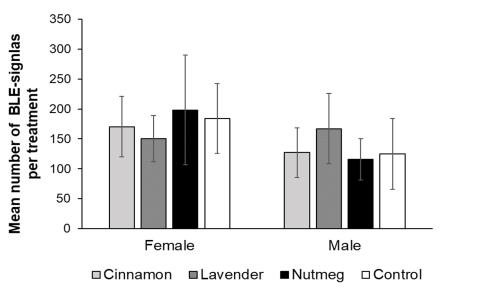
During the entire study, the smartphone received signals from the two BLE-tags. Totally, the signal strength varied between -110 to -60 dB. For the signal strength -70 to -60 dB, which represented the closest distance between the smartphone and the BLE-tag, there were no significant differences between the treatments for the two snow leopards.
Half-duplex (HDX)
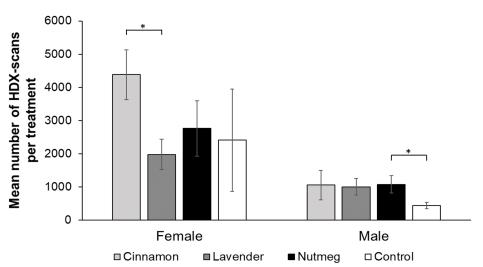
The antenna where able to detect the microchips day and night, throughout the entire study. The number of scans where divided between the individuals and between the four treatments. For the female, there where significantly more scans in the cinnamon treatment than the lavender treatment. For the male, there where significantly more scans in the nutmeg treatment compared to the control treatment.
Odour enrichment
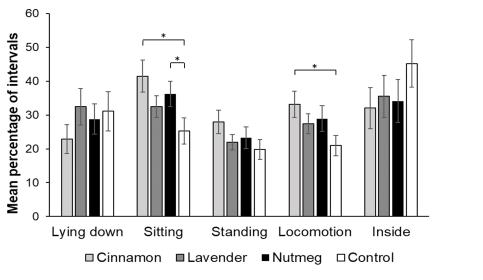
Active behaviours
Here, the results are presented in how many percent of the intervals the behaviours occured. There were significant differences in the behaviour Sitting, which was performed more during the cinnamon and nutmeg treatments, compared to the control treatment. There was also a significant difference in the behaviour Locomotion, which was performed more in the cinnamon treatment than the control treatment.
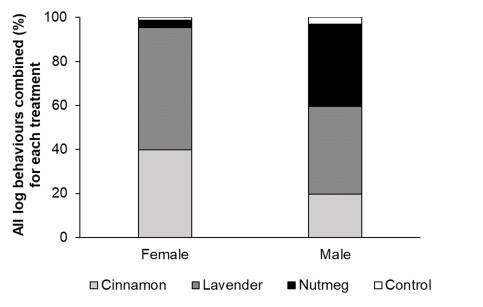
Log behaviours
Both snow leopards showed most interest towards the lavender treatment and least interest towards the control treatment. Here, all log behaviours were combined for each treatment.
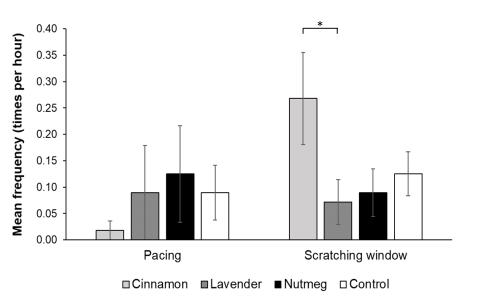
Stereotypic behaviours
Pacing was only performed by the female, while Scratching window was performed by both individuals. There was a significant difference in the behaviour Scratching window, which was performed more in the cinnamon treatment compared to the lavender treatment.
Responsible for this page:
Director of undergraduate studies Biology
Last updated:
05/30/18
